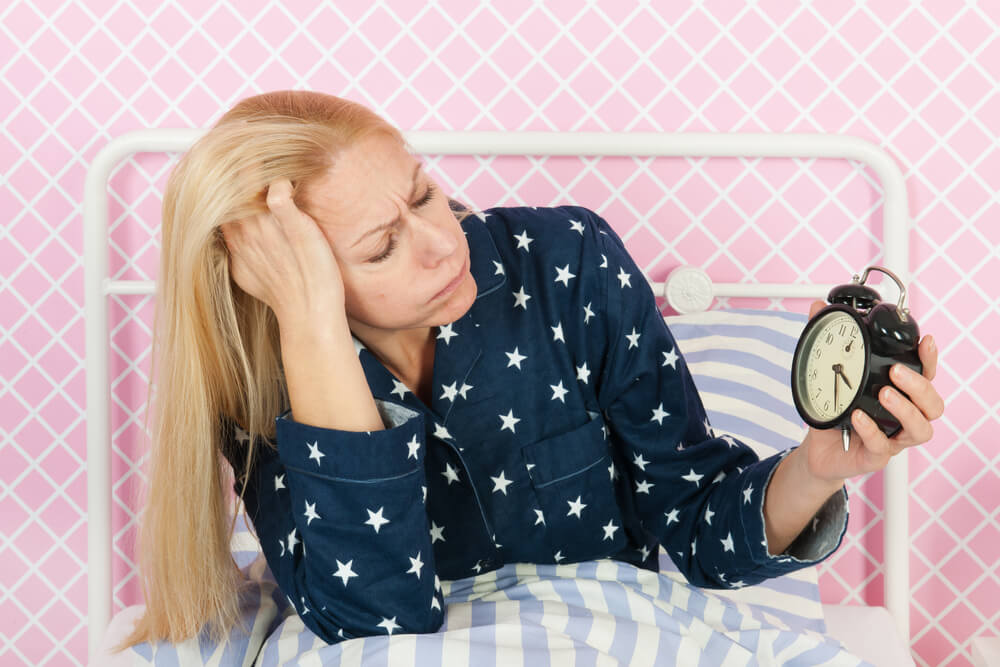If you are going through menopause, you’re probably wondering how long the symptoms will last. While the answer to this question is different for every woman, it lasts about seven years but can be as long as 14 years. The nature of the symptoms also varies from person to person, and the specific timeline of symptoms is highly variable as well. Here’s what you need to know.
How Long Does Menopause Last after Monthly Cycles End?
Symptoms typically increase during the first year after menopause begins (e.g., 12 months without a monthly cycle). Hot flashes, chills, mood and sleep issues, and weight gain are all likely to increase during this time period. However, the exact onset of these symptoms can vary, with some women experiencing them during the six years prior to the loss of a monthly cycle. On average, these symptoms can lasts about seven years but can be as long as 14 years after the beginning of menopause.
How Long Do the Stages of Menopause Last?
- Perimenopause: The first phase of the process is perimenopause. Estrogen levels begin to decrease somewhat during this time, and this causes monthly cycles to become irregular. In addition, estrogen levels tend to fluctuate during this period of time, which means that menopause-like symptoms will also fluctuate.
Perimenopause typically lasts for four to six years, but it can last as long as 12 years for some women. In most cases, the onset occurs between ages 35-45. However, it can occur earlier or later in a minority of women. While they do remain potentially fertile during this time, it becomes far more difficult to conceive. Hot flashes, fatigue, chills, and other symptoms associated with menopause begin to emerge during this stage.
- Menopause: After a year goes by with no monthly cycles, menopause has occurred. This is when the most intense symptoms appear. Typically, they will increase during the first year after the start of menopause, and then they’ll decrease gradually over a period of several years. It typically occurs between ages 45 and 55, but it can be earlier or later for some women. Occasionally, it occurs in the early 60s. Rarely, it can occur as early as one’s 20s or 30s, but this is quite uncommon.
- Post-menopause: Menopause is a permanent change, and it’s rare for a woman to experience a return of monthly cycles after menopause has begun. It is extremely rare for monthly cycles to occur again if they have been absent for two years or more. If you do experience this, it’s important to see your physician right away.

While menopause symptoms will disappear for most women seven years after their last cycle, symptoms can occasionally surface many years later in a mild form. Hot flashes are one of the most common menopause symptoms that women experience years after the disappearance of most of them.
However, this is not the case for all women. Some women find that they no longer experience menopausal symptoms after as little as two years from the beginning of menopause. Some women experience osteoporosis as a result of the reduced estrogen levels that occur during menopause. Fortunately, this condition can be treated, and hormonal treatments can stop the progression of it.
The Answer to the Question of How Long Do Menopause Symptoms Last Varies
Some women will experience an abrupt cessation of their monthly cycle, which does not recur. In these cases, there are often very few symptoms during perimenopause. Following that, however, the onset of symptoms once menopause does begin can be rapid and intense in these cases. Many other women will experience a gradual shift from irregular cycles to no cycles, which will last for several years.
This is the most common pattern, and it tends to be associated with a gradual onset of symptoms. Often, the severity of symptoms tends to fluctuate prior to and after menopause for a period of around 10 years. These fluctuations can be quite significant, and it’s common for women to feel fine on some days and experience intense hot flashes accompanied by sweating, mood changes, and other symptoms that are associated with menopause for others.
In general, late-onset menopause (e.g., going through menopause later than age 55) is associated with a reduced risk of osteoporosis and a longer life expectancy than women who go through it at a typical age. However, this depends on the individual and the medical conditions (if any) that they’re dealing with.
However, early-onset menopause can be associated with health problems. Fortunately, it can be possible to delay early menopause if perimenopause has begun, but this depends on the cause of the condition. If you’re wondering how long does menopause last on average, if you go through it early, the answer is usually that it lasts the same amount of time that it would otherwise.
Can Treatments Be Used to Reduce Menopause Symptoms?
In some cases, it is possible to reduce the time that menopause symptoms last through treatment. If these symptoms are recurring for an extended period of time and are bothersome, you may consider HRT (hormone replacement therapy). This is considered to be a safe and effective option for postmenopausal women.
Essentially, this therapy is used to increase your estrogen levels, which will reduce or eliminate the symptoms of menopause in many cases. However, HRT will not reverse the process of menopause, but some types of treatment can bring back certain aspects of monthly cycles for some women (e.g., bleeding and other period-like symptoms). However, fertility does not return after menopause, even if a woman is taking hormone replacement therapy.
There are two main types of hormone replacement therapy (HRT). The most common type of HRT involves taking both estrogen and progestin taken daily. Another regimen involves taking estrogen daily and supplementing that with progestin taken daily but only during a two week period each month. A combination of estrogen and progestin taken daily will generally not cause a return of monthly cycles, but alternating estrogen and progestin may for some women. However, this typically only occurs for a few months. Rarely, this reaction to the treatment will last for a longer period of time, but it is uncommon.
In most cases, HRT is well-tolerated, and it can be continued for years if this is necessary. It also tends to be highly effective, and most patients are able to continue the therapy as long as it’s crucial to relieve menopause symptoms.
This is often for a period of around 10 years if therapy is started at the beginning of perimenopause. However, it can be needed for close to 20 years if it’s started at the beginning of perimenopause for some women. However, some women need to take HRT for as little as six to eight years or less if it’s started early in perimenopause.

Mona Lisa Treatment for Menopause
Dr. Andrew Krinsky can assess you to determine the best hormonal therapy for your menopause symptoms. At our practice, we have numerous satisfied patients, and the treatments we offer can dramatically reduce or even eliminate the symptoms associated with menopause. Dr. Krinsky is compassionate and offers the most modern, up-to-date gynecological care. Give us a call or get in touch with us online today, and get relief from your menopausal or perimenopausal symptoms.


